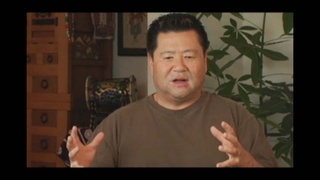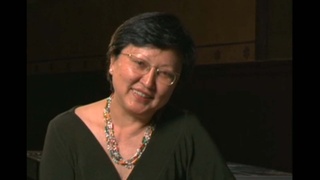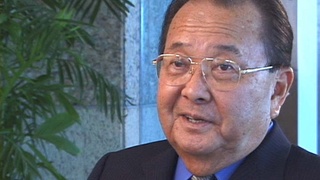Interviews
Identity as a conscious ongoing process
I think my own identity changes whether I did the project or not. I think identity is a conscious ongoing process. We always redefine who we are, depending what we want to do consciously, and sometimes it’s unconscious, who we hang out with. I know that when I hang out with my lifeguard friends I talk a different way. And I know that when I hang out with my Karate brethren I speak a different way, and I know that when I’m living in Japan I speak a different way, or living in Hawai`i, I slip right back into pidgin. And there’s a certain thing that we sometimes just drift into our identities.
The example I give is let’s say you hear someone talk on the phone. I use it for college students. Say you listen to your roommate talk on the phone, and he talks to his mother, he’s like “Yeah, okay. Yes, okay. Yeah, I gotta go,” and then he hangs up and talks to his boss and he’s like, “Oh, no problem, ha ha, sure, sure, I got it, bye bye.” And then he calls some girl he met at the bar and says “Hey baby, how you doin’?” We have these guises, so I think it’s a process, we’re always changing.
Date: May 3, 2006
Location: California, US
Interviewer: Jim Bower
Contributed by: Watase Media Arts Center, Japanese American National Museum.
Explore More Videos

Advantages of being Nikkei (Spanish)
(b. 1950) Nisei Chilean, Businessman


Childhood shame for being Nikkei in Enumclaw, Washington
Judge, only Japanese American to serve on CWRIC.

On the Impact of the Camp Experience
(b. 1942) The first Asian American woman judge

Thoughts on the term, "Nikkei"
(b. 1949) Musician and arts educator and adminstrator.

Post-redress future of Japanese Americans
Judge, only Japanese American to serve on CWRIC.



Need generational change in Japanese community (Spanish)
(1925-2014) La Plata Hochi, Journalist


Defining the term "Nikkei" (Portuguese)
Former Director, Museu Histórico da Imigração Japonesa no Brasil

Brazilian of Japanese descents (Portuguese)
Former Director, Museu Histórico da Imigração Japonesa no Brasil

Nikkei community concentrated in São Paulo (Portuguese)
Former Director, Museu Histórico da Imigração Japonesa no Brasil

Changing life styles of successive generations (Portuguese)
Former Director, Museu Histórico da Imigração Japonesa no Brasil

